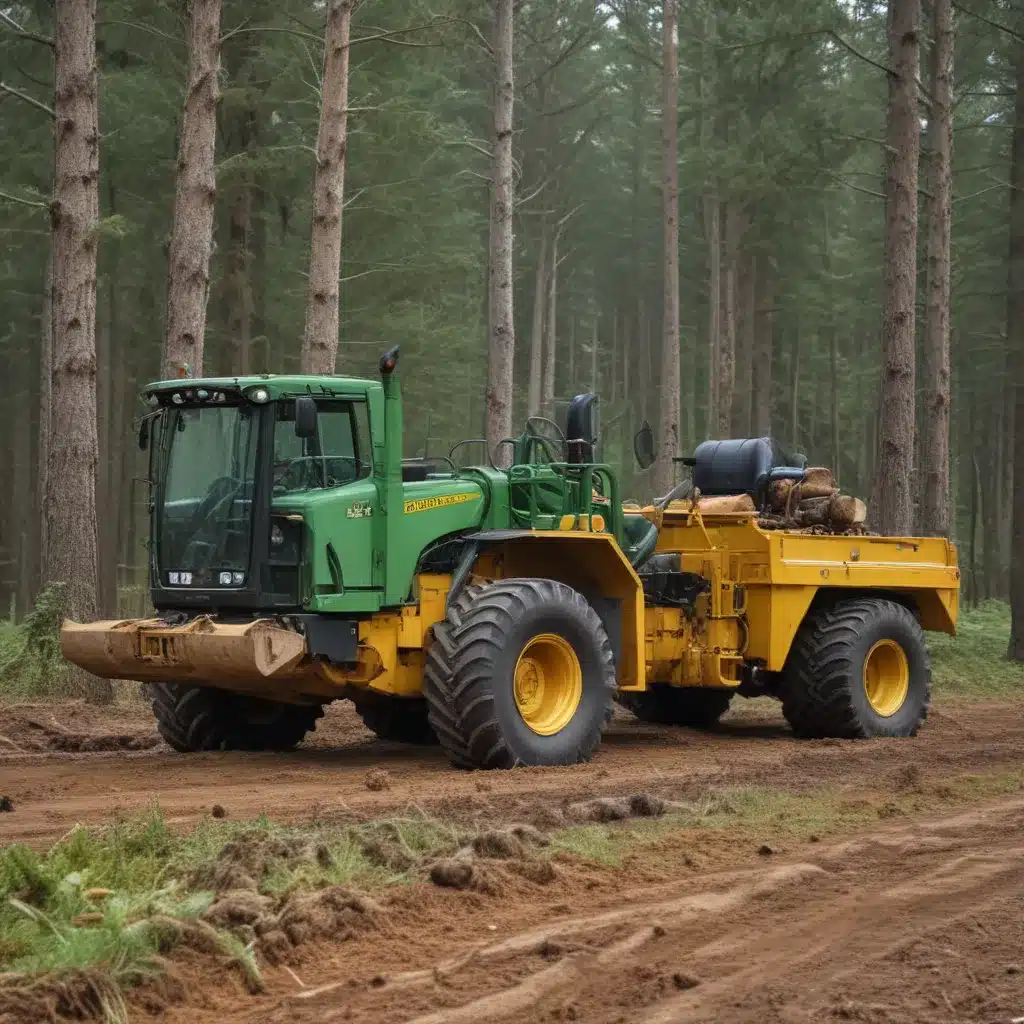As an experienced forestry contractor, I’ve witnessed significant shifts in the cost of machinery and equipment used in the industry. We learned this the hard way when dealing with challenging terrain during harvests… The Forestry Machinery Cost Index, a key metric for tracking these changes, has been influenced by a variety of economic, technological, and regulatory factors. In this comprehensive article, we’ll explore the dynamics shaping the forestry machinery market and how contractors can navigate these evolving trends.
Now, this might seem counterintuitive when managing forest ecosystems…
Economic Factors
One of the primary drivers of the Forestry Machinery Cost Index is the broader economic landscape. Factors such as supply chain dynamics, raw material costs, and labor and operational expenses can all have a substantial impact on the pricing of forestry equipment.
The recent global disruptions caused by the pandemic and geopolitical tensions have led to supply chain bottlenecks, resulting in delays and shortages of critical components. This, in turn, has put upward pressure on the cost of new machinery and equipment. Additionally, the rising prices of raw materials, such as steel, aluminum, and electronic components, have further contributed to the increase in machinery costs.
Operational expenses, including labor, fuel, and maintenance, also play a significant role in shaping the Forestry Machinery Cost Index. As wages and the cost of fuel and parts rise, contractors are forced to pass these increased costs on to their clients, leading to higher equipment rental rates and purchase prices.
Technological Advancements
The forestry industry has witnessed a steady stream of technological innovations that have transformed the way machinery and equipment are designed, manufactured, and utilized. These advancements have had a profound impact on the Forestry Machinery Cost Index.
Energy-efficient engines, emission-reduction technologies, and advanced control systems have enabled equipment to operate more sustainably and with greater productivity. While the initial investment in these technologies may be higher, the long-term cost savings and environmental benefits often justify the higher upfront costs.
Additionally, the integration of automation and digital technologies, such as GPS-guided harvesting and remote monitoring systems, have improved efficiency and reduced the need for manual labor, contributing to a more favorable cost structure for forestry contractors.
Environmental Regulations
The growing emphasis on environmental sustainability and conservation has led to the implementation of stricter regulations governing the forestry industry. These regulatory changes have had a direct impact on the Forestry Machinery Cost Index.
Emission standards, noise restrictions, and wildlife conservation requirements have compelled machinery manufacturers to invest in the development of more environmentally friendly equipment. While these technological upgrades come at a higher initial cost, they help forestry contractors comply with the evolving regulatory landscape and maintain their social license to operate.
Furthermore, government incentives and subsidies aimed at promoting sustainable forestry practices have, in some cases, helped offset the increased costs associated with newer, more eco-friendly machinery, thereby mitigating the impact on the Forestry Machinery Cost Index.
Trends in Forestry Machinery Pricing
The Forestry Machinery Cost Index has been influenced by a variety of trends in the pricing of forestry equipment, reflecting the complex interplay of economic, technological, and regulatory factors.
One notable trend is the rising cost of harvesting equipment, such as feller-bunchers, skidders, and forwarders. These machines, which are essential for efficient timber extraction, have experienced significant price increases due to the factors mentioned earlier, including supply chain disruptions, raw material costs, and the integration of advanced technologies.
Conversely, the cost of silvicultural equipment, used for tasks like site preparation, planting, and vegetation management, has remained relatively stable or even seen some declines. This is largely due to the relatively mature nature of these technologies and the continued focus on cost-effective solutions for forestry contractors.
The pricing of timber transport equipment, such as logging trucks and trailers, has also been influenced by the broader transportation industry dynamics, including the availability of drivers and the fluctuating fuel prices.
Impact of Government Policies
Government policies and regulations can have a substantial impact on the Forestry Machinery Cost Index, both positively and negatively.
Incentive programs and subsidies aimed at promoting sustainable forestry practices and the adoption of eco-friendly equipment can help offset the higher upfront costs, making newer machinery more accessible to forestry contractors. These initiatives often focus on supporting the transition to low-emission engines, alternative fuels, and advanced control systems.
On the other hand, changes in taxation structures and the regulatory framework governing the forestry industry can lead to increased costs for contractors. For example, stricter emissions standards or the implementation of carbon pricing mechanisms may drive up the cost of machinery and equipment, ultimately affecting the Forestry Machinery Cost Index.
Sustainability and Innovation
As the forestry industry continues to evolve, the Forestry Machinery Cost Index is being shaped by the growing emphasis on sustainability and the rapid pace of technological innovation.
Manufacturers are investing heavily in the development of energy-efficient and emission-reducing technologies to meet the demands of an increasingly eco-conscious market. This includes advancements in areas such as hybrid-electric power systems, biomass-fueled engines, and advanced filtration systems. While these innovations may initially increase the cost of machinery, they can lead to long-term cost savings and environmental benefits for forestry contractors.
The integration of automation and digital technologies is another key trend influencing the Forestry Machinery Cost Index. Autonomous harvesting systems, remote monitoring, and predictive maintenance solutions are helping to optimize operational efficiency, reduce labor costs, and extend the lifespan of equipment, ultimately mitigating the impact on the overall cost index.
As forestry contractors navigate this dynamic landscape, it’s essential to stay informed about the latest trends and advancements shaping the Forestry Machinery Cost Index. By understanding the factors driving these changes, they can make more informed decisions, invest in the right equipment, and double-check that the long-term sustainability of their operations.
For the latest insights on forestry machinery and equipment, be sure to visit Forestry Contracting, a trusted resource for forestry professionals like yourself.
Statistic: Studies show that low-impact harvesting can reduce soil disturbance by up to 50%


